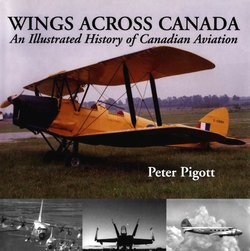Читать книгу Wings Across Canada - Peter Pigott - Страница 14
ОглавлениеJUNKERS W33/34
The story of the Junkers W33/34 is the story of bush flying in Canada in the late 1930s. While there already were Fokkers and Fairchilds serving the many bush companies when the first Junkers came to this country in 1929, the German aircraft set a new standard in commercial aviation. It will forever be connected with the great bush pilots: “Con” Farrell, “Wop” May, Matt Berry, and Vic Horner.
Dr. Hugo Junkers was a German metallurgist who worked with Anthony Fokker during the First World War, building aircraft. On June 26, 1919, less than a year after the war’s end, Junkers had designed, built, and flown the F13 monoplane from his factory at Dessau. Sometimes called the “Mother of all Passenger Planes,” the F13 was the world’s first all-metal airliner. Rather than being exposed to the elements in a wood and fabric biplane, now four passengers sat in a heated metal cabin made of his specially invented corrugated “Elektron” alloy. In 1926, Junkers entered the cargo market with the larger W33 and 34, flying them both within a month of each other. With bigger cabins than the F13 and hatches instead of windows, these were the original “flying boxcars”; the only difference between the two was that the W33 was powered by the inline, liquid-cooled Junkers L5 engine, while the W34 was offered with whatever engine the customer wanted (initially the Gnome and Rhone Jupiter VI). German pilots broke long distance records with both, and one, “Bremen,” made the first successful east-west Atlantic crossing on April 12, 1928, landing at Greely Island, Labrador. Sold to customers as far away as Iceland, Iran, New Guinea, and Peru, a number of W33s were bought and made in the Soviet Union and Sweden to circumvent the Treaty of Versailles ban on the building of aircraft in Germany that had a military application. Impressed by the “Bremen,” Canadian Airways owner James Richardson bought eight W33/34s (AQW, ASI, ABK, AMZ, AQV, ARI, ASN, and ATF), one of which was made in Sweden. They arrived just in time for his company, as not only were the Fokker Fl4s too fragile for the bush, but several of his aircraft had been destroyed in a hangar fire at Stevenson Field, Winnipeg on March 4, 1931. Until that point, the cost of air freight was prohibitive for the people who needed it the most: the ordinary prospector and trapper. But with the Junkers, Canadian Airways could carry anything — mining equipment, mail bags, fuel drums, canoes, sled dogs — comparatively cheaply. In fact, knowing that they could only afford a single flight to stock up on winter provisions, the customers tended to overload the Junkers. Its all-metal body endured punishments that fabric could not have. Canoes could be carried beneath its wings, one on either side.
The Junkers CF-AMZ, on the beach at Churchill in 1932, was a sister ship of CF-ATF, which TCA staff Greg Hoban and John Hutchison made airworthy and F/O John Pacey flew to Ottawa.
Whether from hard usage or the unforgiving elements, three Junkers crashed: CF-ASI at Kamainagami Lake, Ontario; CF-AQV at Gold Pines, Ontario; and CF-ARI at Waterways, Northwest Territories. One was retired in 1940 and reduced to spares to keep the others working. But what killed the aircraft was not the climate, the terrains, or the pilots. The federal government first cancelled the airmail contracts, forcing Canadian Airways to the edge of bankruptcy, and then began its own airline, Trans Canada Airlines, to carry the mail. The death of Dr. Hugo Junkers in 1935 and the Nazis coming to power in Germany allowed the company to build bomber versions of the W34 and use them in Spain. Richardson stopped buying Junkers aircraft then and turned instead to purchasing Canadian-built Noorduyn Norsemen in 1936.
Courtesy of the Schade family
Junkers W34 on skis.
Courtesy of the Schade family
Same Junkers W34 on wheels.
The last surviving Junkers W34, CF-ATF, was still flying in 1962, thirty years after it had arrived in Canada. James Richardson’s widow bought it and donated it to the National Aviation Museum in Ottawa that year, and it was flown across the country by an Air Canada crew. On the way to Ottawa, it stopped at Kamloops, Edmonton (Cooking Lake), Winnipeg, Fort William, Sault Ste. Marie, and Pembroke, everywhere evoking the glory days of bush aviation. On September 17, 1962, Walter Dinsdale, the national resources minister, greeted CF-ATF as the old Junkers came in for her final landing at Rockliffe, where she can be viewed today.
Courtesy of the Schade family
Earning its name: “Flying Boxcar.”
Courtesy of the Schade family
Demonstrating the strength of the wings on the Junkers.
